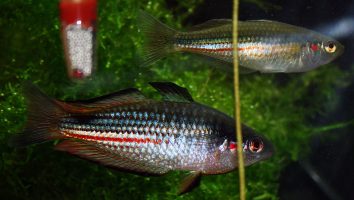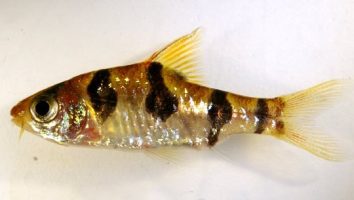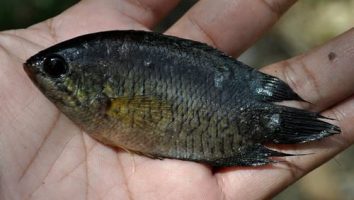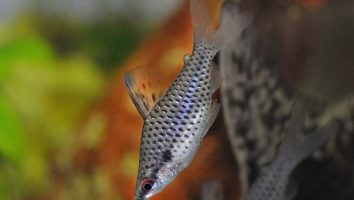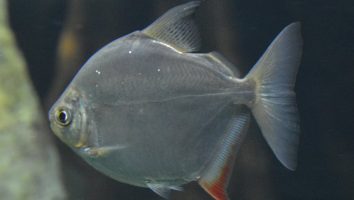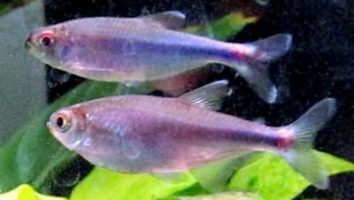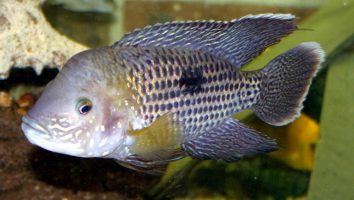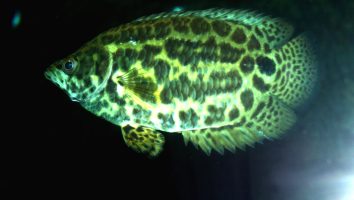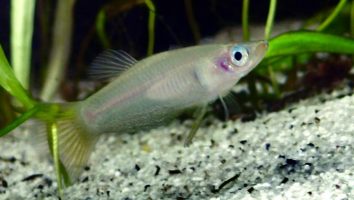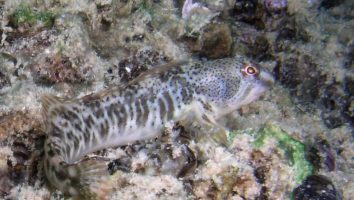Adolfo’s catfish, also known as the corydoras, is a beautiful and easy to care for freshwater fish that is perfect for beginner aquarists.
This species is very peaceful and can be kept in a community tank with other peaceful fish. They are also very easy to breed!
In this guide, you will learn everything you need to know about Adolfo’s catfish care. Tank size, diet, tank mates, and more.
Table of contents
Species overview
Adolfo’s Catfish (Corydoras adolfoi) is a small freshwater fish that is native to Brazil. It is a member of the Corydoras genus, which contains many other popular aquarium fish such as the Bronze Corydoras and the Pepper Corydoras.
This fish is black with white stripes running along its body. It has a maximum length of about 2.5 inches (6.4 cm).
Adolfo’s Catfish are peaceful fish that do well in community tanks. They are bottom-dwellers that prefer to scavenge for food, although they will also accept most commercial fish food.
These fish are easy to care for and are a good choice for beginner aquarists.
Appearance

Adolfo’s catfish, or corydoras, have a very typical catfish appearance. They have a long, slender body with a rounded belly. They are brown or black in color with dark spots or stripes on their body. Their fins are all black or dark brown.
The most distinguishing feature of this fish is the long barbels on their head. These barbels are used to help the fish find food in the water.
Adolfo’s catfish grow to be about 2-3 inches in length.
Lifespan
The average lifespan of Adolfo’s catfish is around 2 to 5 years. As with most fish, their lifespan can be impacted by a number of different factors.
The level of care they receive is obviously important. If they’re kept in poor water conditions or are stressed by their tank mates, their lifespan will be reduced.
Their diet is also a factor. If they’re not getting enough food or the right type of food, they won’t live as long as they could.
Size
Corydoras Adolfoi can grow up to 6 cm in length.
Tank
Tank Size
Adolfo’s catfish are a small species of Corydoras that only grow to be about 2 inches in length. Because of their small size, they can be kept in tanks as small as 10 gallons.
We recommend a 20 gallon tank as the minimum for a school of 5-6 fish. If you want to keep a larger school or add other tank mates, you’ll need an additional 2-4 gallons per fish.
Water Parameters
Corydoras are one of the most popular groups of aquarium fishes. They are peaceful, active, and make a great addition to any community aquarium.
Corydoras are native to South America, where they inhabit slow moving rivers and streams. In the wild, they are found in a wide range of habitats, from blackwater creeks to clearwater rivers.
Corydoras are fairly easy to care for, but they do have some specific requirements that need to be met in order to thrive.
The most important thing to remember when keeping corydoras is that they are a schooling fish. In the wild, they live in large groups and are constantly in contact with other members of their species.
In the home aquarium, they should be kept in groups of at least 5 or 6 individuals. Corydoras are very social creatures and do not do well when kept alone.
Another important thing to remember is that corydoras are bottom dwelling fish. In the wild, they spend their time searching for food on the substrate.
In the home aquarium, they should be provided with a substrate that is soft and sandy. This will allow them to forage for food and dig around without damaging their delicate barbels.
Here are a few basic water parameters to help create a healthy environment for corydoras.
- Water temperature: 72 to 79 degrees Fahrenheit
- pH levels: 6.5 to 7.5
- Water hardness: 2 to 12 dGH
- Alkalinity Levels: 4-8 dKH
What To Put In Their Tank
Adolfo’s Corydoras are a small species of freshwater fish that are native to South America. They are a schooling fish, which means they do best in groups of 6 or more.
When it comes to setting up their tank, you have a few options. A sandy substrate is always a good choice since it’s soft and won’t hurt their delicate barbels.
You can also include some rocks and driftwood in their habitat. Just make sure that any rocks you use are smooth and don’t have any sharp edges.
As for plants, you have a few options. These fish are known to nibble on soft plants, so you’ll want to choose something that can withstand a little abuse (hornwort, water wisteria, or java moss are all good choices).
You can also include some floating plants in their tank. This will provide them with some shelter and help reduce the amount of light that reaches the bottom of the tank.
Common Diseases
Adolfo’s catfish are a hardy bunch and don’t usually succumb to disease easily. However, like all animals, they can still get sick if the conditions in their tank are not ideal.
The most common disease that these fish get is ich. This is a parasite that can cause a lot of problems if it’s not dealt with quickly. The most obvious sign of ich is the presence of white spots on the body of the fish.
If you notice these spots, it’s important to act fast. There are a lot of different treatments for ich, but the sooner you start the treatment, the better.
Another disease that these fish can get is fin rot. This is an infection that usually affects the fins of the fish. The most common symptom of fin rot is the presence of red or black spots on the fins.
If you notice these spots, it’s important to check the water quality in the tank. Poor water quality is the most common cause of fin rot, so fixing that should be your first priority.
There are plenty of other diseases that can affect these fish, but they’re not as common. In general, the best way to prevent these fish from getting sick is to maintain the quality of the water in their tank. A tank with clean and stable water conditions always leads to healthier fish who are more resistant to disease.
Behavior & Temperament
The Adolfo’s Corydoras, also known as the False Julii Cory, is a peaceful, schooling fish that does best in a group of 5 or more of its own kind. It is a nocturnal fish that will often spend the day hiding among plants, driftwood, or rockwork, and will become active at night to feed.
This Corydoras is a perfect addition to a community tank, as it gets along well with other peaceful fish. It should not be kept with fish that are too large, as they may view the Corydoras as food.
The Adolfo’s Corydoras is a scavenger that will help to keep the tank clean by eating leftover food and algae.
Tank Mates
Adolfo’s catfish are a great addition to any community tank. They’re peaceful, docile, and get along well with other fish.
These catfish are also bottom-dwellers, so they won’t compete with fish that occupy other parts of the water column.
Some compatible tank mates for Adolfo’s catfish include:
- Guppies
- Platies
- Mollies
- Swordtails
- Neon Tetras
- Cherry Barbs
- Otocinclus Catfish
- Corydoras Catfish
Breeding
Adolfo’s catfish/corydoras are very easy to breed in captivity. All you need is a pair of adult fish and a breeding tank. These fish don’t need anything complicated to spawn.
Start by setting up a breeding tank. It should be at least 20 gallons in size and filled with soft, acidic water. You can use a sponge filter to avoid harming the eggs.
Then, add some plants and hiding places. Corydoras like to lay their eggs on plants, so make sure there are plenty of options available.
When ready, add a pair of adult fish to the tank. These fish will breed readily in captivity, so you shouldn’t have any trouble getting them to spawn.
Once the eggs are laid, the male will guard them. He will fan them with his fins to keep them clean and oxygenated.
The eggs will hatch in about a week. At that point, you can remove the adults and start feeding the fry baby brine shrimp.
Conclusion
Adolfo’s Corydoras are an excellent addition to any freshwater aquarium. They are peaceful, easy to care for, and make a great addition to any community tank.
We love their vibrant colors and elegant patterns, and we think you will too!
If you’re looking for a Corydoras that is a little different from the rest, then Adolfo’s Corydoras is a great choice.

